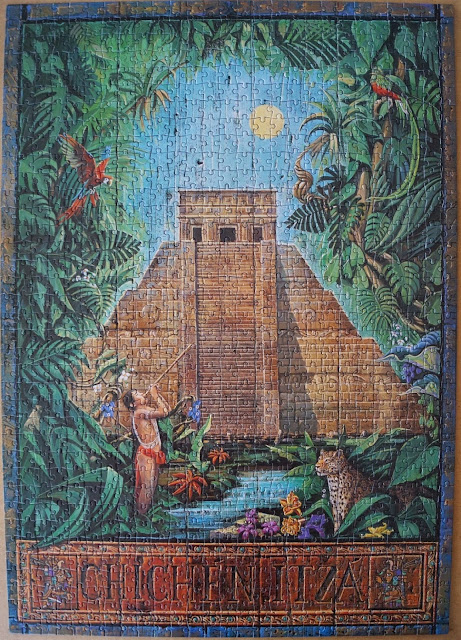Emil Schumacher (1912-1999)
Born in Hagen, representative of abstract expressionism in post-war Germany.
To show his art in an appropriate way, a museum was built during 2006-2009. You already saw this building
a few weeks ago.
At the ground floor the artist's atelier is on display:
used brushes, tons with colours, huge bags with pigments - the easel is covered with
layers and layers of colour
climbing up to the first floor
The onion (1990), oil on wood
Whenever I see this vibrant red onion, I stand there and watch it.
No idea why, but I like this thing, that looks half tomatoe, half garden-reddish.
At least, I don't have to explain.... art.
Helios (1988), oil-paint on canvas
Inscripton on the wall: "Emil Schumachers Art is neither strictly abstract nor explicit graphic. His early work is already applied with themes like arcaded sidewalks, ladders, birds, horses and wheels."
Impressions of Marocco (1983)
Art on a whitewashed peace of cardboard
Impressions of Assur, Iraq (1988)
Postwar still-lifes
Still-life with pumpkin and clivia (plant), 1946
Bottle and Pumpkin (1946)
"1945 - Meeting at the wreckage"
is a special exhibition on display right now:
it shows the horror of war as well as the hard times in german post-war years
Bombing-raid on a city (1946) - a series of four woodcarvings
Phosphorus bombing on a city (1946) - a series of four horrifying woodcarvings
Sodom (1957) - Oil on canvas
There were hard times for old men in the post-war years.
Starving, nothing to do, nowhere to go. While younger men died in war or were kept in war-captivity, the older men resigned starving. This is what Emil Schumacher wants to show.
Man with a bottle (1946), ink
Sitting old man (1946), coloured pen
Women and children collect wood in front of bombed houses.
Linocut is the perfect medium chosen by the artist to express the hopeless and
hard work of a starving family
Woodcollector (1945), linocut
Is there hope to find the way back to a normal life?
Is it allowed to amuse a few years after the war ended?
Is a fun fair the symbol for hope? I guess so.
Kirmes (1948), Linocut
******
Emil Schumacher also worked on ceramics and porcelain:
Porcelain, KPM (1992-1993)
1989: on his daily walks he found slate rooftiles to be casted away. In the same year he created a circle of fourteen birds (Uccelli). Mr. Schumacher scratched the slate and painted with acrylic colours. He left all signs of age and human usage (nailholes, breaking edge) and framed the tiles in used-wood-frames.
Uccelli (1989), slate, acrylic colour, wood
Last, but not least:
A coloured linocut of 1951 "The Organ-grinder"
Papermill Kabel, an urban district of Hagen (1949), oil on wood
The papermill is still going strong...
It was interesting to find a way to the art of Emil Schumacher yesterday.
%2Bmini.jpg)
%2Bmini.jpg)

%2Bmini.jpg)
.jpg)
.jpg)

.jpg)

.jpg)
.jpg)

.jpg)
.jpg)
.jpg)
.jpg)
.jpg)
.jpg)
.jpg)
.jpg)
.jpg)
.jpg)
.jpg)
.jpg)
.jpg)
.jpg)
.jpg)
.jpg)
.jpg)
.jpg)
.jpg)
.jpg)
.jpg)
.jpg)
.jpg)
.jpg)
.jpg)
.jpg)
.jpg)
.jpg)
.jpg)

.jpg)
.jpg)
-002.JPG)
-003.JPG)
-004.JPG)
-005.JPG)
-006.JPG)
-007.JPG)
-008.JPG)
-009.JPG)
-010.JPG)
-011.JPG)


.jpg)


%2Bmini.jpg)